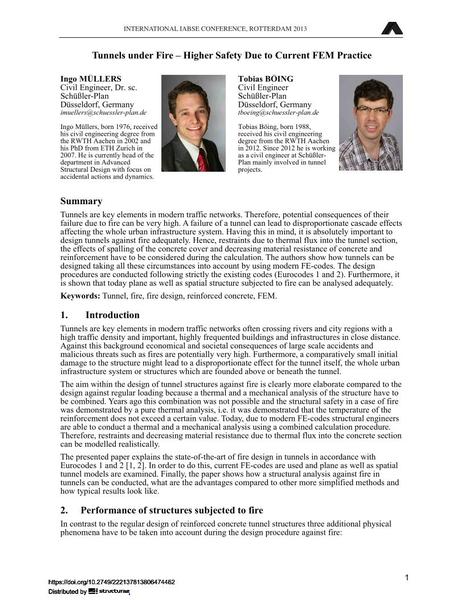Tunnels under Fire – Higher Safety Due to Current FEM Practice

|
|
|||||||||||
Bibliographic Details
| Author(s): |
Ingo Müllers
Tobias Böing |
||||
|---|---|---|---|---|---|
| Medium: | conference paper | ||||
| Language(s): | English | ||||
| Conference: | IABSE Conference: Assessment, Upgrading and Refurbishment of Infrastructures, Rotterdam, The Netherlands, 6-8 May 2013 | ||||
| Published in: | IABSE Conference, Rotterdam, May 2013 | ||||
|
|||||
| Page(s): | 110-111 | ||||
| Total no. of pages: | 8 | ||||
| Year: | 2013 | ||||
| DOI: | 10.2749/222137813806474462 | ||||
| Abstract: |
Tunnels are key elements in modern traffic networks. Therefore, potential consequences of their failure due to fire can be very high. A failure of a tunnel can lead to disproportionate cascade effects affecting the whole urban infrastructure system. Having this in mind, it is absolutely important to design tunnels against fire adequately. Hence, restraints due to thermal flux into the tunnel section, the effects of spalling of the concrete cover and decreasing material resistance of concrete and reinforcement have to be considered during the calculation. The authors show how tunnels can be designed taking all these circumstances into account by using modern FE-codes. The design procedures are conducted following strictly the existing codes (Eurocodes 1 and 2). Furthermore, it is shown that today plane as well as spatial structure subjected to fire can be analysed adequately. |
||||
| Keywords: |
FEM reinforced concrete fire design fire tunnel
|
||||
